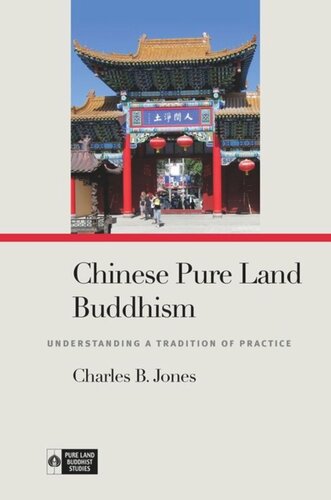

Most ebook files are in PDF format, so you can easily read them using various software such as Foxit Reader or directly on the Google Chrome browser.
Some ebook files are released by publishers in other formats such as .awz, .mobi, .epub, .fb2, etc. You may need to install specific software to read these formats on mobile/PC, such as Calibre.
Please read the tutorial at this link: https://ebookbell.com/faq
We offer FREE conversion to the popular formats you request; however, this may take some time. Therefore, right after payment, please email us, and we will try to provide the service as quickly as possible.
For some exceptional file formats or broken links (if any), please refrain from opening any disputes. Instead, email us first, and we will try to assist within a maximum of 6 hours.
EbookBell Team

0.0
0 reviewsChinese Pure Land Buddhism: Understanding a Tradition of Practice is the first book in any western language to provide a comprehensive overview of Chinese Pure Land Buddhism. Even though Pure Land Buddhism was born in China and currently constitutes the dominant form of Buddhist practice there, it has previously received very little attention from western scholars. In this book, Charles B. Jones examines the reasons for the lack of scholarly attention and why the few past treatments of the topic missed many of its distinctive features. He argues that the Chinese Pure Land tradition, with its characteristic promise of rebirth in the Pure Land to even non-elite or undeserving practitioners, should not be viewed from the perspective of the Japanese Pure Land tradition, which differs greatly. More accurately contextualizing Chinese Pure Land Buddhism within the landscape of Chinese Buddhism and the broader global Buddhist tradition, this work celebrates Chinese Pure Land, not as a school or sect, but as a unique and inherently valuable “tradition of practice.”
This volume is organized thematically, clearly presenting topics such as the nature of the Pure Land, the relationship between “self-power” and “other-power,” the practice of nianfo (buddha-recollection), and the formation of the line of “patriarchs” that keep the tradition grounded. It guides us in understanding the vigorous debates that Chinese Pure Land Buddhism evoked and delves into the rich apologetic literature that it produced in its own defense. Drawing upon a wealth of previously unexamined primary source materials, as well as modern texts by contemporary Chinese Pure Land masters, the author provides lucid translations of resources previously unavailable in English. He also shares his lifetime of experience in this field, enlivening the narrative with personal anecdotes of his visits to sites of Pure Land practice in China and Taiwan.
The straightforward and nontechnical prose makes this book a standby resource for anyone interested in pursuing research in this lively, sophisticated, and still-evolving religious tradition. Scholars—including undergraduates—specializing in East Asian Buddhism, as well as those interested in Buddhism or Chinese religion and history in general will find this book invaluable.